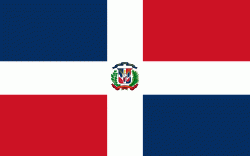Peralta (Peralta)
Peralta is a municipality (municipio) of the Azua province in the Dominican Republic.
The village resides at between 5,000 and 7,000 feet in the mountains. It is about a 40 to 50 minutes trip up and down the mountain to the city of Azua de Compostela. The village is primarily focused on agriculture, livestock, and fruits. Electricity is available for all inhabitants in Peralta. However, it does go out from time to time. Blackouts can range from an hour to the whole day.
There are two rivers in the village, many of the villagers bathe in the river even though they have access to running water. There are a total of four major barrios: Los Jobos, El Higüero, El Mercado, Camboya.
They do have access to running water (since mid70's.)
The village resides at between 5,000 and 7,000 feet in the mountains. It is about a 40 to 50 minutes trip up and down the mountain to the city of Azua de Compostela. The village is primarily focused on agriculture, livestock, and fruits. Electricity is available for all inhabitants in Peralta. However, it does go out from time to time. Blackouts can range from an hour to the whole day.
There are two rivers in the village, many of the villagers bathe in the river even though they have access to running water. There are a total of four major barrios: Los Jobos, El Higüero, El Mercado, Camboya.
They do have access to running water (since mid70's.)
Map - Peralta (Peralta)
Map
Country - Dominican_Republic
 |
 |
| Flag of the Dominican Republic | |
The native Taíno people had inhabited Hispaniola before the arrival of Europeans, dividing it into five chiefdoms. They had constructed an advanced farming and hunting society, and were in the process of becoming an organized civilization. The Taínos also inhabited Cuba, Jamaica, Puerto Rico, and the Bahamas. The Genoese mariner Christopher Columbus explored and claimed the island for Castile, landing there on his first voyage in 1492. The colony of Santo Domingo became the site of the first permanent European settlement in the Americas and the first seat of Spanish colonial rule in the New World. It would also become the site to introduce importations of enslaved Africans to the Americas. In 1697, Spain recognized French dominion over the western third of the island, which became the independent state of Haiti in 1804.
Currency / Language
| ISO | Currency | Symbol | Significant figures |
|---|---|---|---|
| DOP | Dominican peso | $ | 2 |
| ISO | Language |
|---|---|
| ES | Spanish language |















